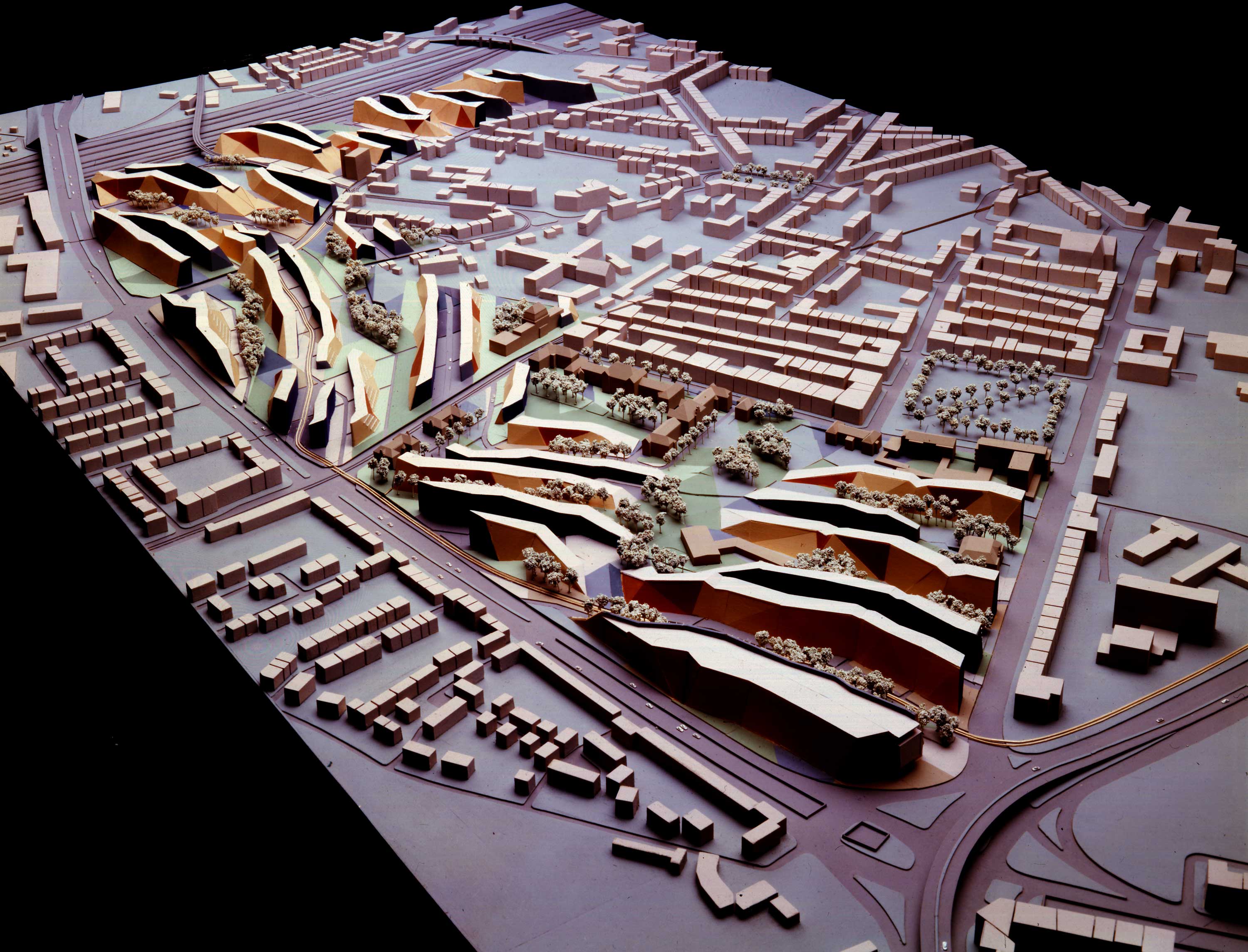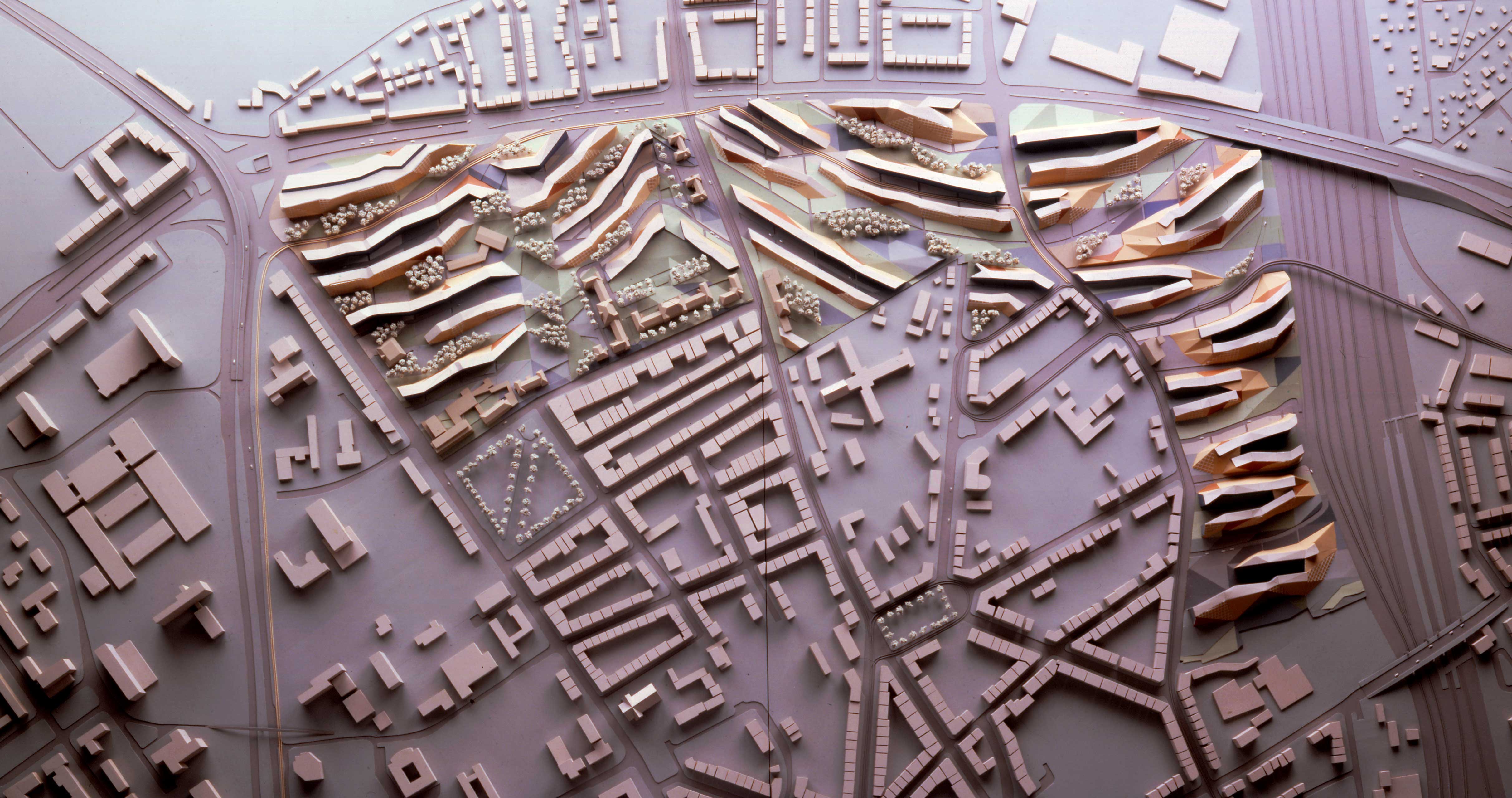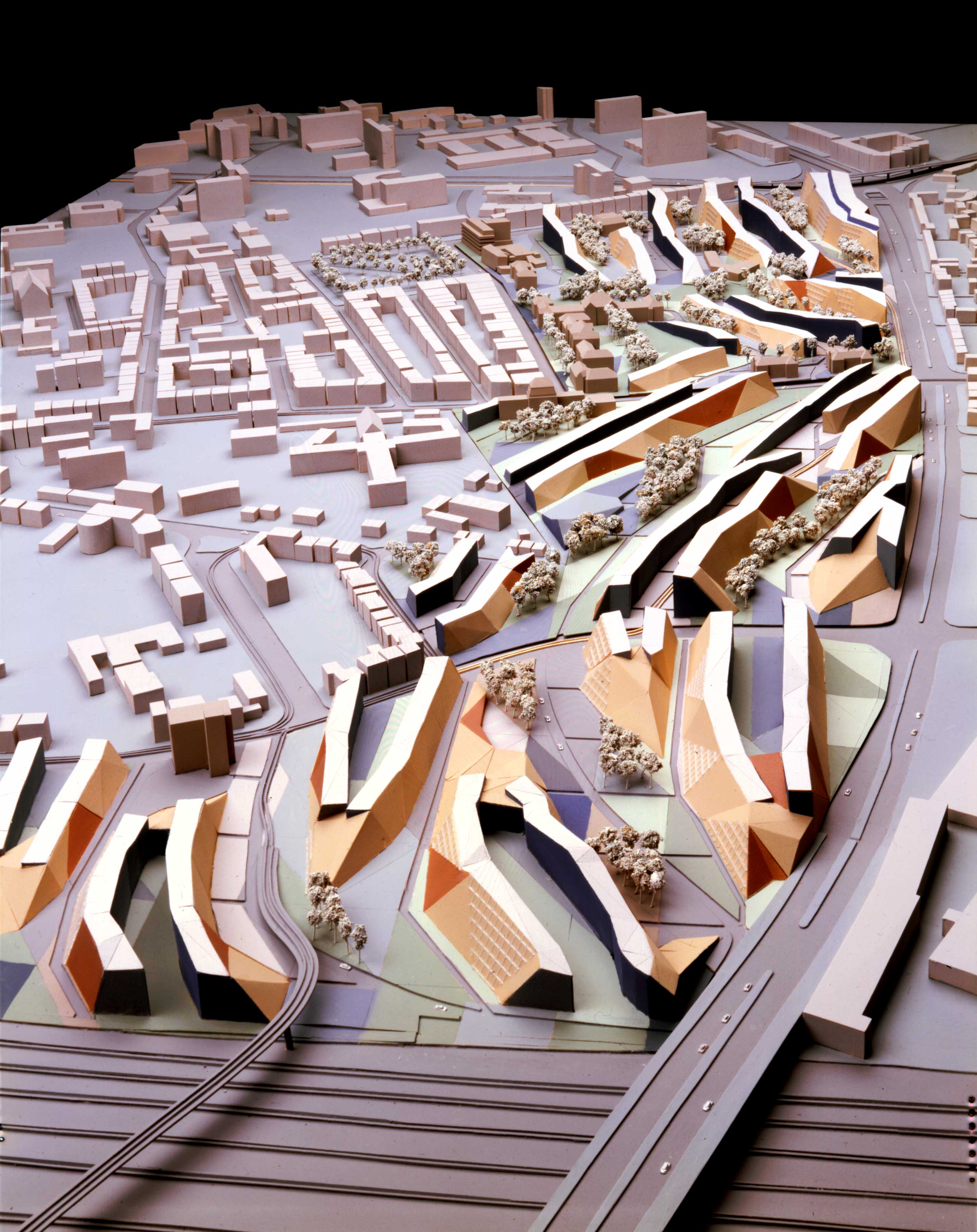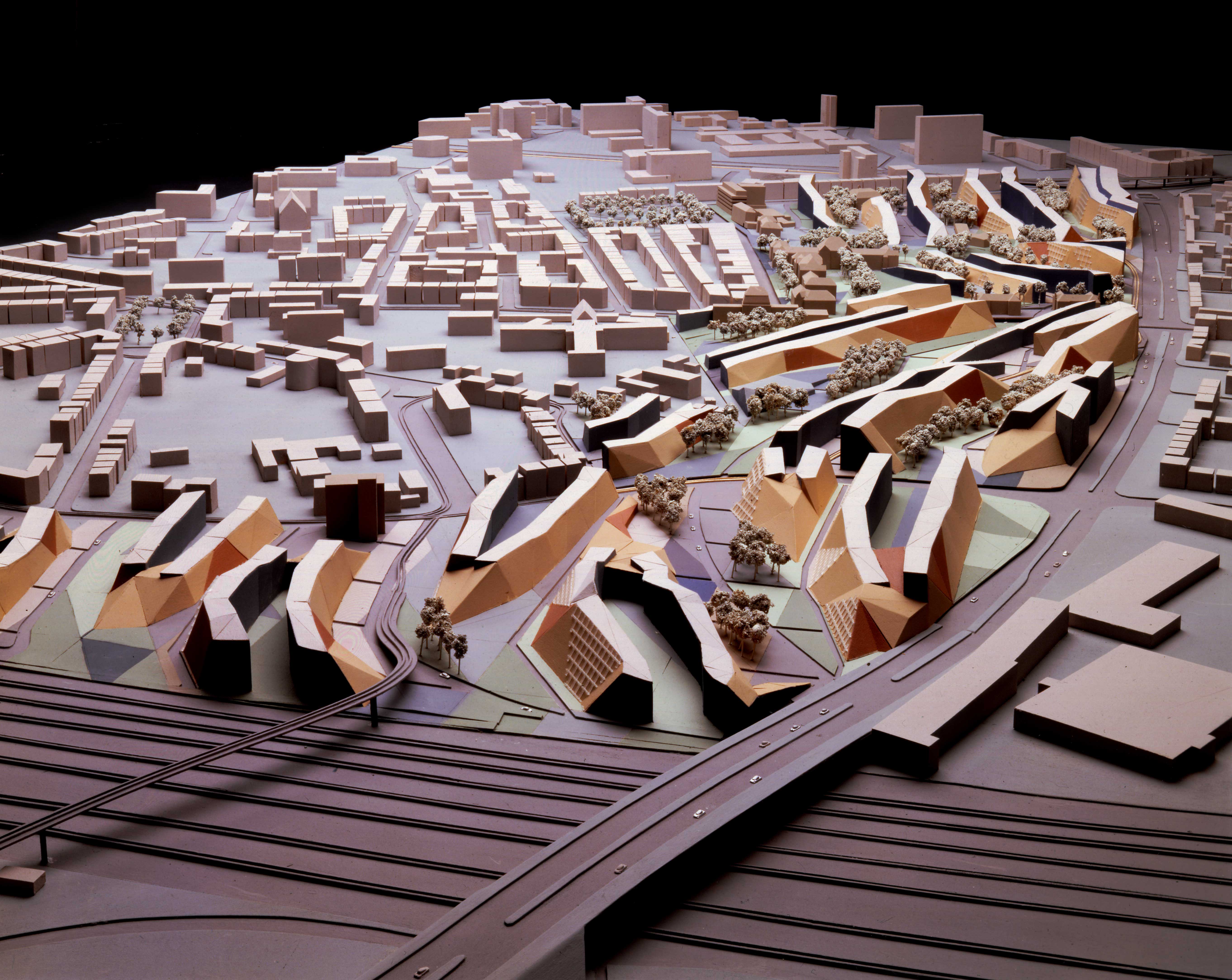
NORDLICHES DERENDORF MASTERPLAN COMPETITION
Location: Dusseldorf, Germany
Year: 1992
Our
proposal recognizes that we are living in a new era of the electronic, which
has replaced the mechanical one. Architectural elements once determined by and
symbolic of mechanical means now reflect the influences of electronic
communication: media, the computer, lasers. In this new era, order can emerge
out of seeming chaos only at certain critical points in the flow of matter and
energy.
In Düsseldorf, one of these specific limits is the system of radar and radio which, because of the site’s proximity to the flight path of the airport, causes a certain height restriction to be mapped onto this project. This mapping derives from the intersection of the radar pattern with the radio pattern, which produces a third interference pattern that becomes one of the form-generators on the site.
A moiré pattern derived from the mathematical representation of the superposition of radar and radio signals provides an idea of limit for physical design. This new mapping is overlaid on the site as a topological structure. Instead of the grid, there is a matrix, which is produced by the stretching of the interference pattern in section over the site.
This is not a utopian idea that spreads as a growth all over Düsseldorf. It is an attempt to deal with a specific urban condition of boundary and how we deal with boundaries that relate to what people who live there understand, because now, through computers and video networks, their boundaries extend to Tokyo and Hong Kong as much as to Hamburg to Berlin. Our project expresses these connections, while at the same time making an urban living place for people – a place that enables them to understand both their specific place and their connection to the larger world.
In Düsseldorf, one of these specific limits is the system of radar and radio which, because of the site’s proximity to the flight path of the airport, causes a certain height restriction to be mapped onto this project. This mapping derives from the intersection of the radar pattern with the radio pattern, which produces a third interference pattern that becomes one of the form-generators on the site.
A moiré pattern derived from the mathematical representation of the superposition of radar and radio signals provides an idea of limit for physical design. This new mapping is overlaid on the site as a topological structure. Instead of the grid, there is a matrix, which is produced by the stretching of the interference pattern in section over the site.
This is not a utopian idea that spreads as a growth all over Düsseldorf. It is an attempt to deal with a specific urban condition of boundary and how we deal with boundaries that relate to what people who live there understand, because now, through computers and video networks, their boundaries extend to Tokyo and Hong Kong as much as to Hamburg to Berlin. Our project expresses these connections, while at the same time making an urban living place for people – a place that enables them to understand both their specific place and their connection to the larger world.
Concept
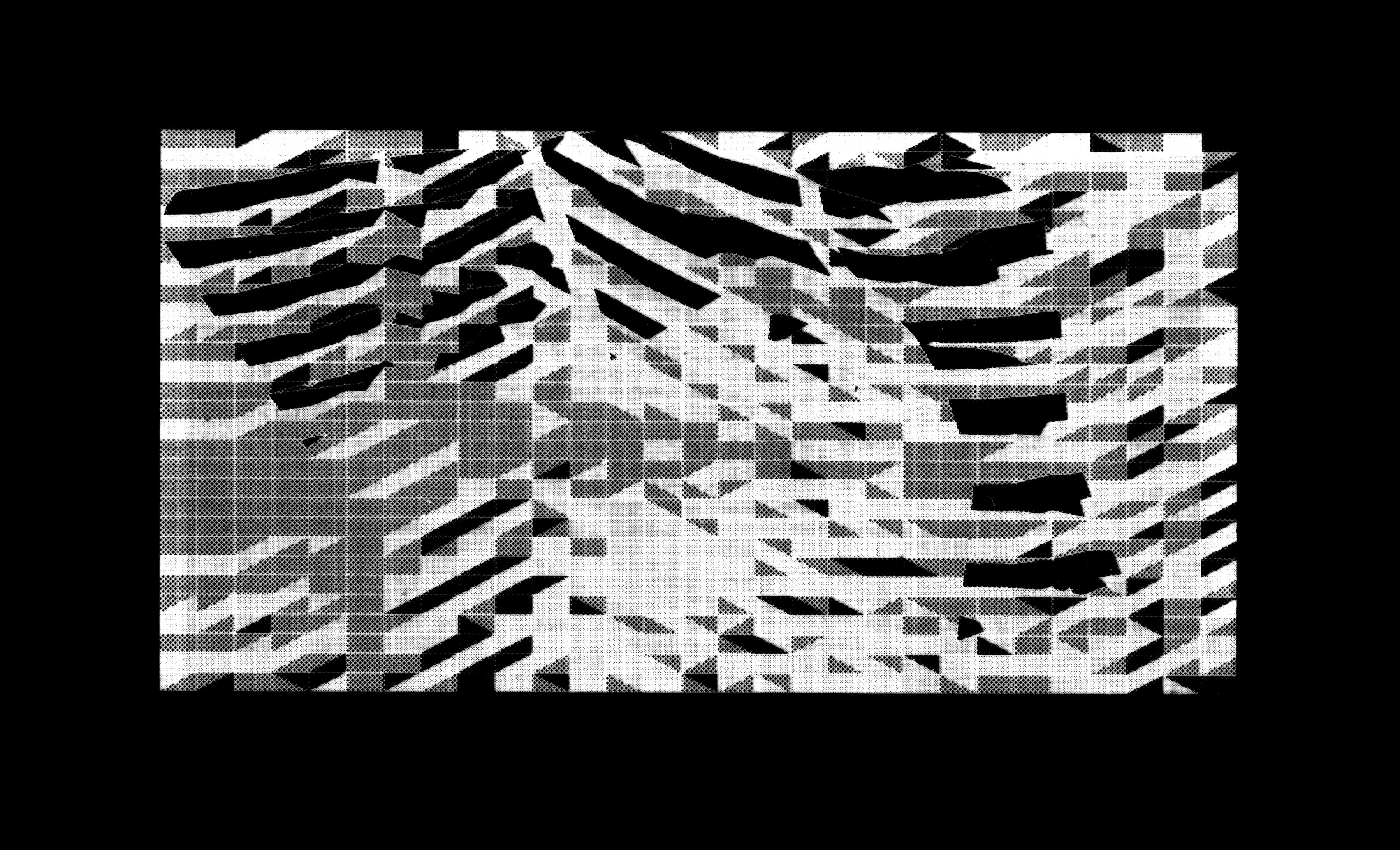


Drawings

Model photos
